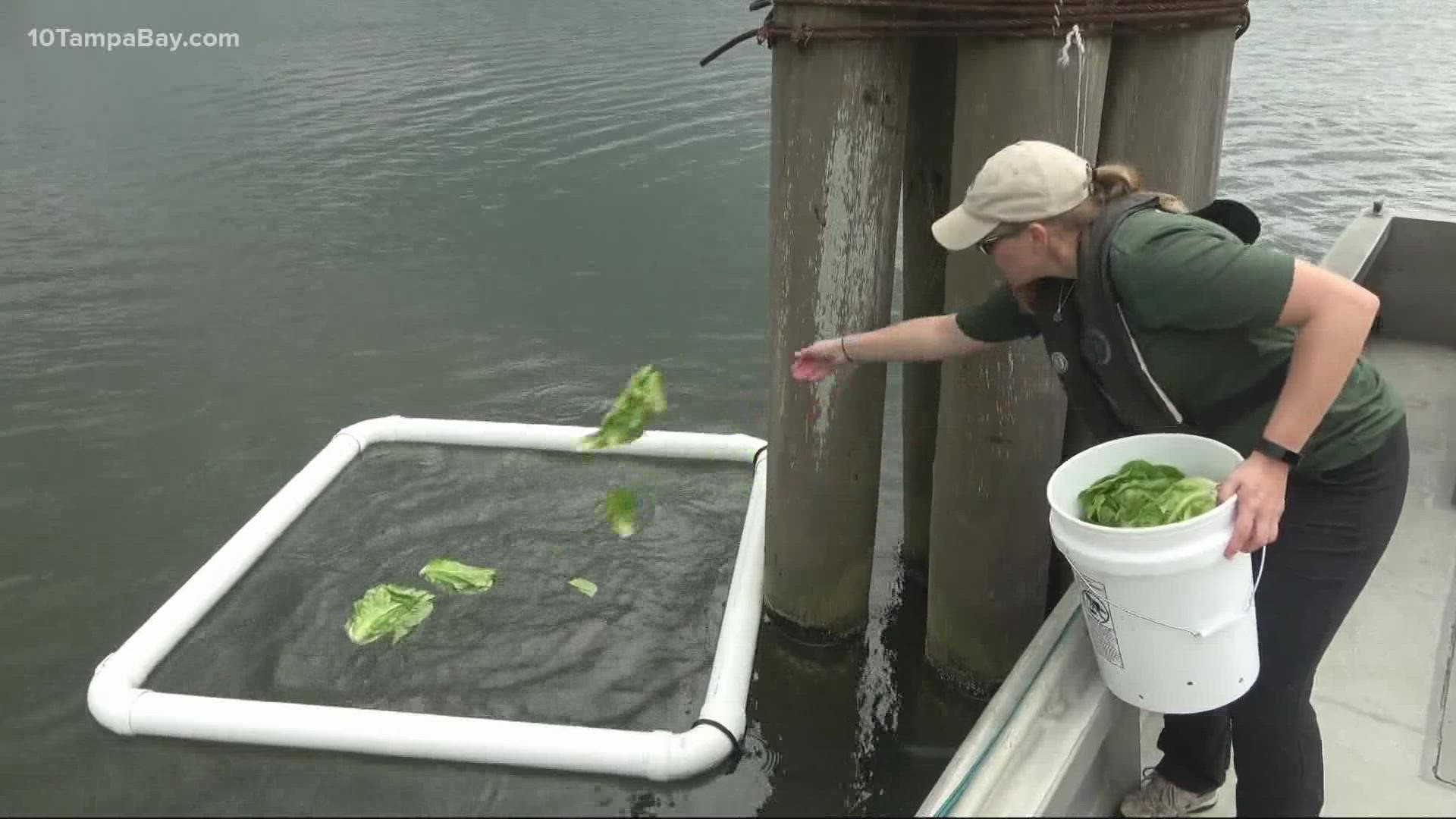TAMPA, Fla. — An experimental program to save manatees from starvation by feeding them tons of lettuce is scaling back now that the water is getting warmer again.
Biologists say they are still treating dozens of malnourished sea cows and were able to save dozens more, but they’re still hesitant to call the operation a success.
As the water gets warmer, manatees that had congregated during our colder winter months are again dispersing and hopefully finding food on their own.
“At this point, the carcass load has dropped off dramatically which is fantastic,” said Florida Fish and Wildlife Conservation Commission Capt. Mike Davis.
The joint unified command responding to the manatee’s unusual mortality event — or UME — is suspending its experimental feeding program. It was designed to compensate for a disastrous lack of natural seagrass around Florida’s Indian River Lagoon.
“It’s not over,” said FWC’s Tom Reinert, “But we are scaling back our response because the wintertime was the most severe cases of malnutrition and increased mortality.”
FWC says in total, the feeding program dispersed 202,155 pounds of lettuce at a cost of about $117,000.
Since the beginning of the year, 37 manatees have been rescued along Florida’s Atlantic coast and 49 statewide. Seventeen of those, they believe, were rescued from starvation compared to 28 last year.
In all, scientists have verified 457 Manatee deaths since December 1, 2021. That’s considerably lower than last winter when the number was 582.
“But that does not mean that manatee [are] doing better. There could be several explanations and over the summer we will have to go through our data,” said veterinarian Dr. Martine DeWit.
Researchers aren’t sure if it was simply a milder winter as opposed to the lettuce that help reduce those numbers and scientists still have major concerns.
Dozens of manatees remain malnourished and there’s no way of knowing whether they’ll find other food sources on their own. FWC plans to shift much of its focus back to enforcement during the summer months.
“We’re going to be focusing on manatee zones and high traffic areas, high traffic boating areas,” said Capt. Davis.
And when the cold weather eventually returns, it’s almost a certainty, say scientists, that the feeding program will need to return as well.
“But I think collectively a lot of the things that happen this winter put us in a much better place for the 2022-2023 winter,” said Teresa Calleson with the U.S. Fish and Wildlife Service.
“I think we all anticipate the need for a similar level of response next winter,” said Andy Garrett with FWC.
Although the manatee feeding program is ending, for now, FWC says it will leave enough resources in place so they can quickly ramp up their response again if the manatees need it.
The agency also thanked the public, which has stepped up with donations to help support the manatee feeding program.

